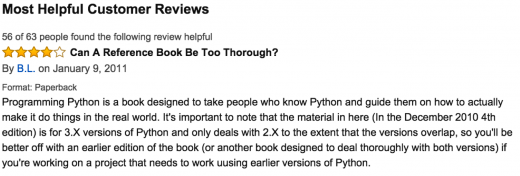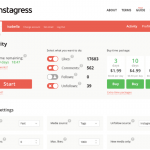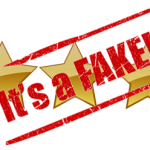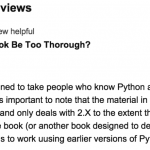10 Simple Ways To Spot A Fake Amazon Review
— September 1, 2017
Let me paint a hypothetical (or perhaps very real) scenario.
You want to purchase something on Amazon. You’re excited about this purchase. It’s a new [insert that thing you’ve been dying to get]. You’ve set aside some cash over the past month and are pumped to finally be able to buy.
You go on Amazon and begin researching the different options. You read reviews on each product and find one that seems perfect. It’s got thousands of positive, glowing, over the top reviews.You click “Buy” and eagerly await for your happiness to be delivered.
When your package arrives, you rip it open with the fervor of a kid on Christmas.
It looks right. It feels right.
But there’s one problem.
It’s a terrible product. It breaks quickly. Or it’s poorly constructed. Or it’s just not the same as portrayed in the pictures.
So what gives? What about all those amazing reviews? You trusted those!
Unfortunately, it’s quite possible that they were fake. Yes, in an effort to boost sales, some Amazon sellers will either purchase reviews or offer free products in exchange for an “honest” review. As you can imagine, this deeply skews the rating system on Amazon.
Fortunately for you, Amazon is beginning to take steps to crack down on and even remove fake reviews.
But until all those fake reviews are gone, you need to know how to spot a fake.
Here are 10 ways to spot a false review on Amazon.
#1 – There Are Numerous Reviews Within A Short Time
Typically, it takes quite a while for a product to organically accumulate reviews. After all, only a small number of customers will actually review the product, which means that it should take a number of months for it to build up a significant base of reviews.
If there are flood of reviews (particularly positive ones) within a very short time, it’s a good sign that those are not legitimate reviews.
#2 – They All Contain Similar Photos
If most of the reviews contain similar photos, they’re probably fake. It’s likely that the company asked the reviewers to post a particular type of photo that will best highlight the product.
For example, if you’re looking at an essential oil diffuser and all the photos show it on an end table, that should raise a red flag.
#3 – You Can’t Find The Company Website
If you can’t find a legitimate company behind the product, a warning bell should go off in your head. That may not mean it’s not a legit company, but it should at least push you to do further research.
If they don’t have a website, it probably means that they’re only selling on Amazon. For all you know, it could be a guy shipping these products out of his basement. If that’s the case, it would be surprising if his product had thousands of positive reviews.
If a product has a reputable company behind it, you can know that you have recourse if something goes wrong with the product. You don’t have this assurance if you can’t even find a company website.
#4 – All The Reviews Use Similar Wording
What are the odds of every reviewer saying something like, “This is a great product and I am definitely buying a lot more?” Pretty small, right? You would expect there to be a variety of descriptions within the reviews.
If you notice that all the reviews have a similar flavor, it may be an indicator that the company asked reviewers to use a particular type of language.
#5 – A High Percentage Of The Reviews Are 5 Star
If almost all the reviews are 5 star, you should at least pause. The product may legitimately be of the highest quality, but this may also indicate that they’re fakes. In any normal product, you expect to see a mix high and mid quality reviews. If you don’t find any middle of the road reviews, this should raise a red flag.
After all, with any product, no matter how good, there will be issues. This should come out at least somewhere in the reviews.
#6 – The Reviews Are All Vague
A fair number of the reviews should contain language that is specific to the product, whether that’s how it functions in particular circumstances or the durability. There should be some reviews that are highly technical in nature, left by the type of people who really enjoy getting into the specifications of a product. There should also be reviews that tell how people are using the products.
If most of the reviews contain vague, unclear language, it may be a signal that they’re not legitimate.
#7 – The Reviewer Uses the Same Review Language Repeatedly
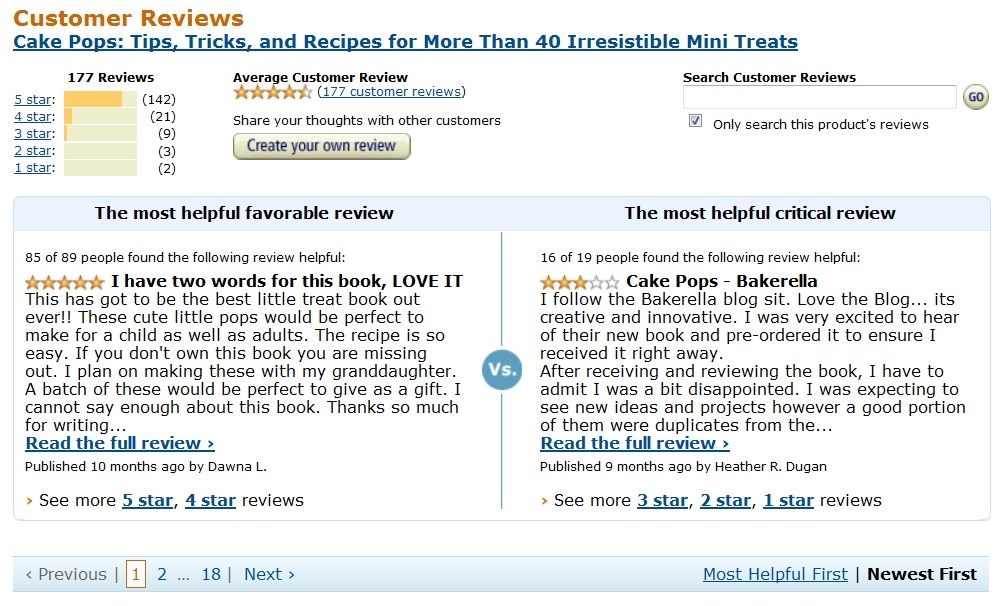
When you click on a person’s username, you can actually see all of the reviews they’ve ever left on Amazon. If they’ve left an unusually high number of reviews containing the same or similar language, there’s a good chance that their reviews are being compensated in some way.
A genuine reviewer will leave thoughtful, detailed reviews about the different ways that they’re using the products. A fake reviewer will essentially copy and paste their language across multiple reviews.
#8 – The Review Is Not A “Verified Purchase”
If a customer purchased the product directly from Amazon, it will say “Verified Purchase” under the headline. This means that they didn’t purchase it from the store or some other site and then come review it on Amazon.
If the review isn’t verified, you should probably discount it. You have no way of knowing whether it’s true, and there’s a good chance that it’s false.
#9 – The Review Is 5 Stars And Really Short
If a review is one sentence long and 5 stars, it offers very little value and may be fake. A true 5 star review should contain some detail as to what makes that product worth buying. Whether that’s the durability of the product or the many uses it has, one sentence simply doesn’t cut it.
#10 – Odd Language Is Used
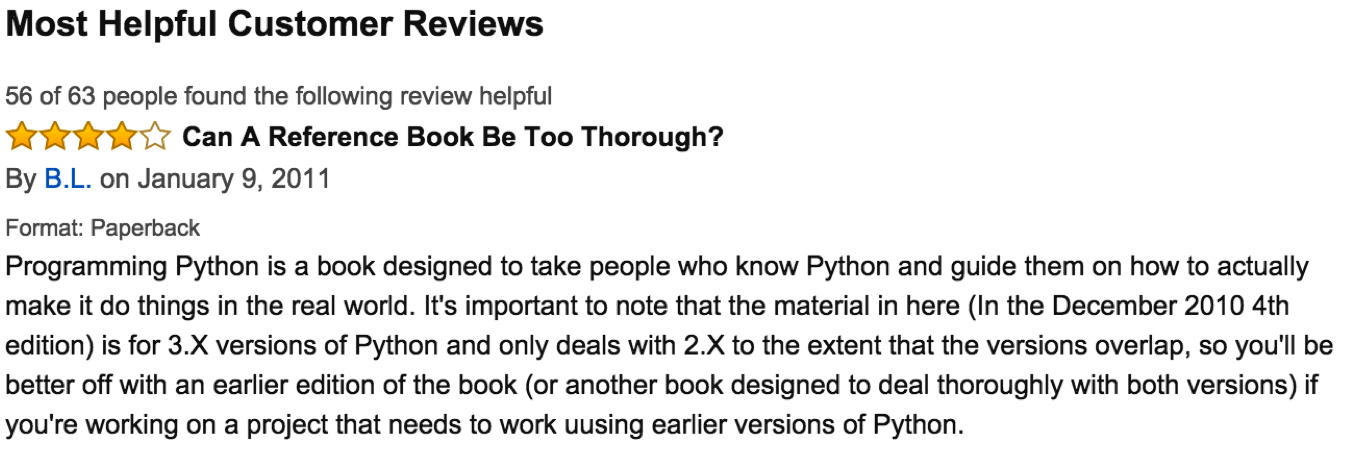
If a product is being sold in the United States for $ 13 and a reviewer uses the phrase “13.00 USD”, it should be a red flag. A native english speaker would never use that type of language and it may indicate that the seller is buying reviews.
How To Spot Biased Reviews
You will encounter many reviews that aren’t exactly fake, but are highly biased. Fortunately, these can be spotted as well. Here are some simple ways to do that.
Disregard Highly Positive or Negative Reviews On Controversial Products
Some products, particularly books, are going to be controversial. If you see a glowing 5 star or vitriolic 1 star on a controversial product, it’s sign that it was written by a biased reviewer.
Disregard Reviews Not Related To The Product
Unfortunately, many reviews aren’t tied at all to the product. For example, a customer may have misunderstood what he was buying, gotten angry, and left a negative review in retaliation. Or a product may have been delivered late, which can be just as much the fault of the postal service.
Any review that’s not tied directly to the product can be disregarded.
Scrutinize “Vine” Reviews
Amazon has what they call the “Vine” program, which provides free products to top reviewers. There is nothing unethical about this, but the simple truth is that any time someone gets something for free, it will bias their review.
At a minimum, you should read some of that person’s other reviews to get a feel for their free product bias.
A Safe Rule Of Thumb
Generally speaking, you should do several things when looking at products.
- Look at the overall balance of reviews. The best product should have a healthy mix of 5 and 4 star reviews, with some three stars thrown in. Make sure to read the worst reviews to determine why they rated so poorly.
- Read reputable review websites like Consumer Reports, Wirecutter, and PC Mag.
- Watch reviews on YouTube. This can give you a visual feel for what your product will look like and feel like. You can also get some honest reviews.
Conclusion
You’ll never be able to fully avoid fake and biased reviews, but if you do some due diligence you can spare yourself a lot of pain.
Yes, it may take some time, which can be difficult if you’re really wanting to get your product, but it’s worth it. The last thing you want to happen is to waste your money on a terrible product.
Digital & Social Articles on Business 2 Community
(63)

